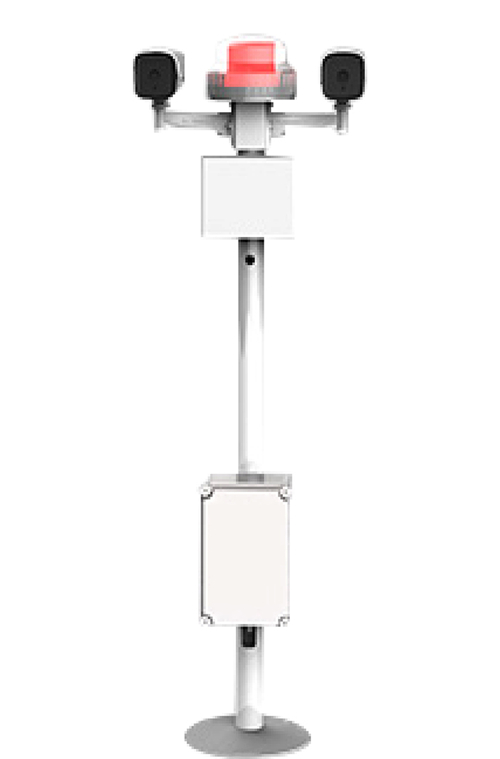Design of perimeter security radar system

With the rapid development of the social economy and the acceleration of urbanization, security and prevention issues are increasingly being emphasized. Especially in important areas such as critical infrastructure, military facilities, airports, prisons, and large industrial sites, preventing illegal intrusion and security threats has become a top priority. The perimeter security radar system, as an efficient means of protection, combines advanced radar technology with other perception technologies to construct a multi-level and all-round security protection system. This article will explore in detail the design principles, system composition, and workflow of perimeter security radar systems.
The perimeter security radar system mainly consists of a radar detection unit, a visual monitoring module, a data processing and analysis center, an alarm and response mechanism, and a user interface and management system. The radar detection unit is the core component of the system, responsible for detecting and tracking moving targets. Modern perimeter security radar systems often use millimeter wave radar technology, which has advantages such as long detection range, multiple tracking targets, low power consumption, small size, long lifespan, high accuracy, and all-weather adaptability. The visual monitoring module captures video streams through cameras, performs secondary verification on targets detected by radar, reduces false alarm rates, and provides intuitive visual evidence for security personnel. The intelligent visual monitoring system can automatically analyze video signals, locate, recognize, and track changes in the monitoring scene, and based on this, analyze and judge the behavior of the target. It can issue alerts or provide useful information in a timely manner when abnormal situations occur.
The Data Processing and Analysis Center is responsible for collecting data from radar and visual monitoring modules, using intelligent algorithms for analysis and processing, and achieving functions such as target recognition and behavior analysis. Specifically, the workflow of the Data Processing and Analysis Center includes data collection, data preprocessing, target recognition and tracking, behavior analysis, and intelligent decision-making. The system obtains real-time radar and video data through the network, performs preprocessing such as filtering and denoising, and improves data quality. Then, machine learning and pattern recognition techniques are used to identify and track the target, analyze the target’s behavior patterns, determine whether there is a potential threat, and automatically decide whether to trigger an alarm based on the analysis results.
Once a potential threat is detected, the system will immediately trigger an alarm and send relevant information to security personnel. The alarm mechanism usually includes forms such as sound and light alarms, mobile notifications, and video linkage. The sound and light alarm device can output clear and accurate alarm information, posing a threat to the invading target; Mobile notifications push alarm information through SMS, email, or applications to ensure that security personnel can respond quickly; Video linkage links alarm information with the video surveillance system, automatically retrieving relevant video clips and providing real-time footage for security personnel. The user interface and management system provide a user-friendly interface, making it convenient for management personnel to view system status, receive alarm information, replay historical records, etc. The system supports importing electronic maps to visually display the location and status of each defense zone; Allow users to customize defense zones, set different alert levels and alarm rules; Display real-time monitoring screens and alarm information for each defense zone; Record all operations and alarm information of the system, support querying by time, location, and other conditions; And realize remote monitoring and management through the Internet.
The workflow of the perimeter security radar system is as follows: the radar detection unit emits millimeter wave signals to cover the designated monitoring area. When a target enters the monitoring range, the radar receives the signal reflected by the target and calculates the distance, angle, and velocity information of the target. The target information detected by the radar is transmitted to the data processing and analysis center through the network. The visual monitoring module automatically adjusts the camera angle based on the target position information provided by the radar, captures the video image of the target, and performs secondary verification. The Data Processing and Analysis Center conducts comprehensive analysis of radar and video data, using intelligent algorithms to identify target types and determine their behavior patterns. Based on the analysis results, the system automatically determines whether to trigger an alarm. If a potential threat is identified, the system will immediately activate an alarm mechanism, and the alarm information will be sent to security personnel through multiple channels to ensure that they can take prompt action. After the security personnel handle the alarm situation, the system records all operations and alarm information for subsequent query and analysis.

When designing a perimeter security radar system, the following principles need to be considered comprehensively:
1. Safety and reliability: The system should ensure the highest level of safety and reliability, using high-quality components and redundant design to ensure normal operation under any circumstances. For example, radar detection units and data processing centers should have multiple backup mechanisms to prevent system failure caused by a single point of failure.
2. Intelligence and flexibility: Utilize the latest AI technology and big data analysis capabilities to enable the system to learn and optimize on its own. At the same time, system design needs to have a high degree of flexibility to adapt to the needs of different application scenarios. For example, the system should be able to automatically adjust parameters according to different environments and time periods, improving detection accuracy and response speed.
3. Usability and maintainability: Provide a simple and intuitive user interface, making it easy for non professionals to use. At the same time, design an easy to maintain architecture to reduce long-term operating costs. For example, the system should have automatic diagnosis and fault reporting functions to help maintenance personnel quickly locate and solve problems.
